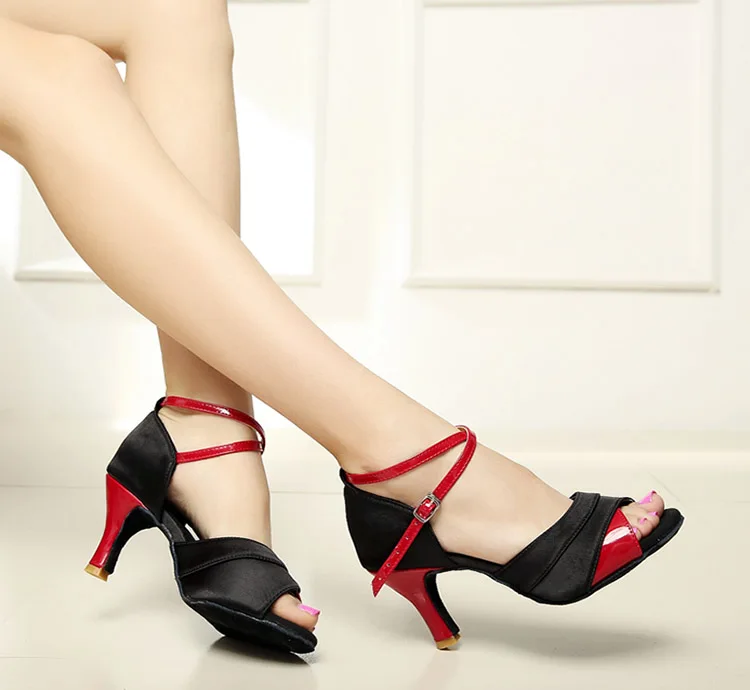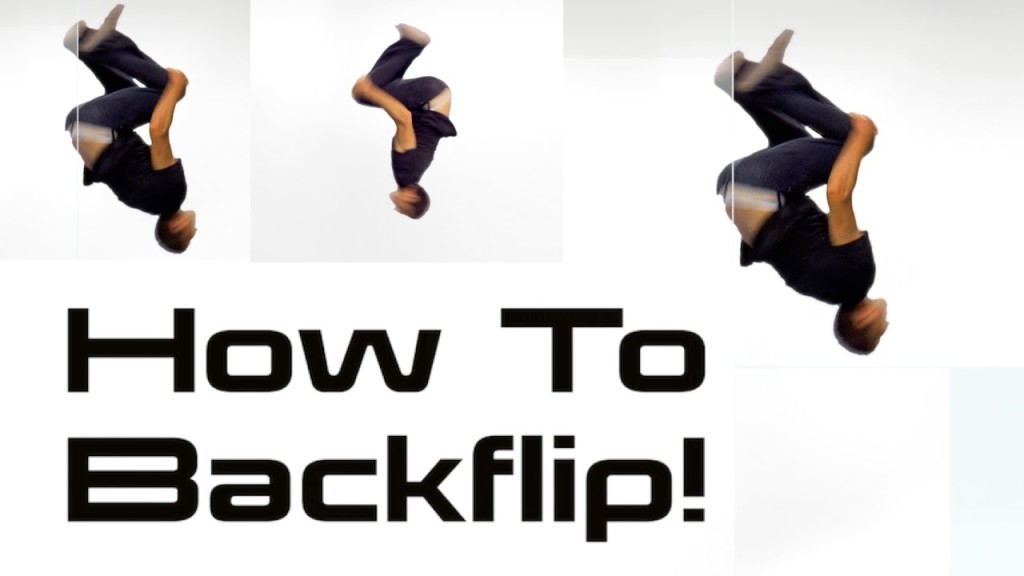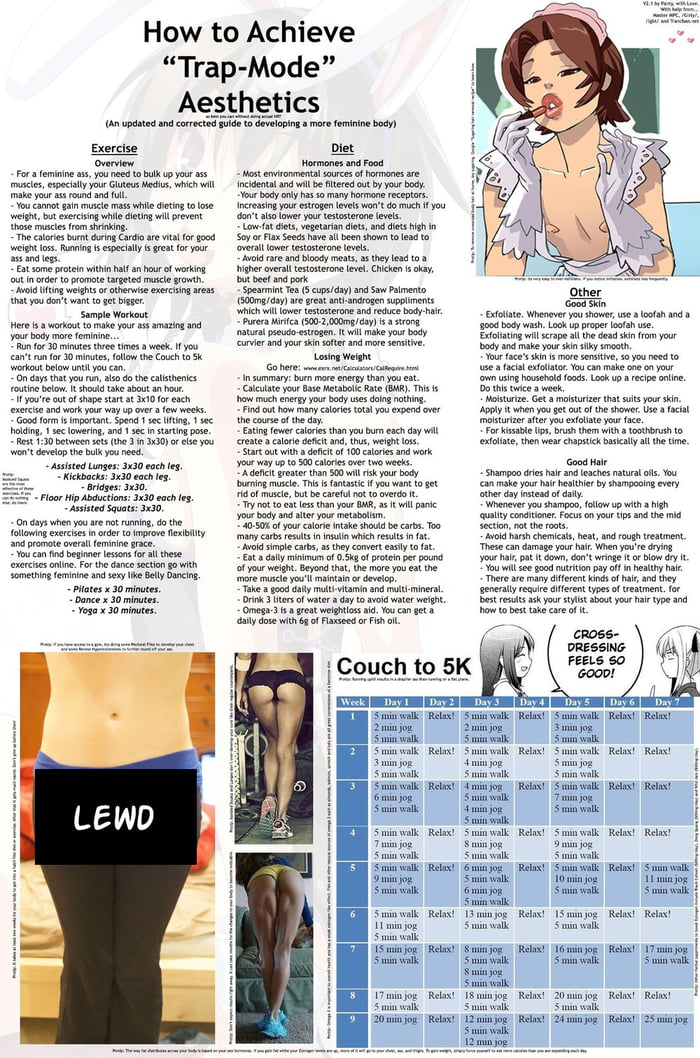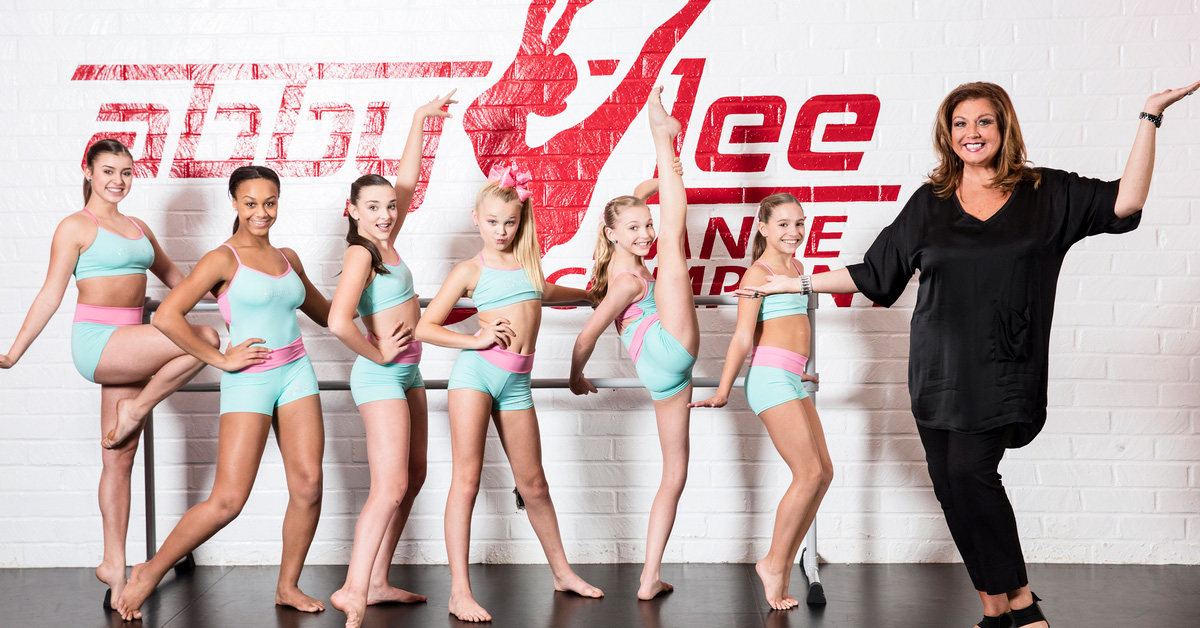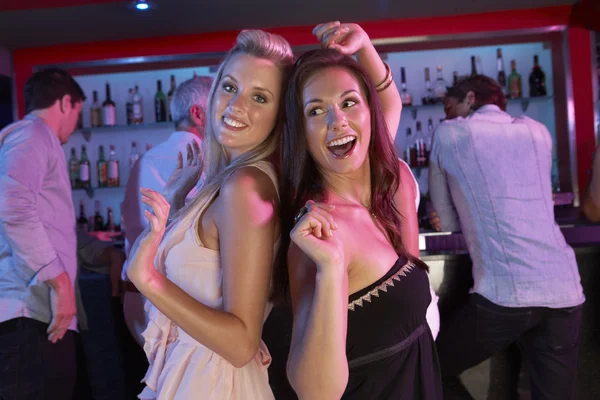How to buckle ballroom dance shoes
Fitting My Dance Shoes – Ballroom Connection
Fitting My Dance ShoesBallroom dance shoes are no different from footwear equipment in other sports and dance disciplines like ballet, rock-climbing, bowling, etc. Therefore, it is very important that we size and fit our dance shoes correctly.
Generally, we wear our street shoes slightly larger to have some room to be comfortable, which is perfectly acceptable for everyday wear. Since we want our ballroom shoes to be more fitted all around, it is common for us to size down in dance shoes. There is no exact conversion, since we all wear our street shoes differently, but here is a general guideline:
Closed-toe styles:
- If you wear street shoes with little or no extra room, you can try the same size in most closed-toe styles
- If you prefer a bit extra room in your street shoes, it may be recommended to try a half size smaller in dance shoes to get the correct fit.
Open-toe styles:
- Open-toe dance shoes are meant to be worn shorter than what we would look for in street shoes, so it is recommended to try about a half size smaller for open-toe styles.
- Since how we prefer our street shoes varies between different people, please keep in mind that some may need to size down more to achieve the correct fit in length.
**Note: A half size corresponds to about ¼ inch in length. Width of shoes are always proportional to the size.
The #1 mistake new ballroom dancers make is to size their dance shoes as though they were ordinary street shoes. Ballroom shoes may look similar to an ordinary shoe, but they are constructed very differently and are meant to be fitted in a specific way to allow us to perform the correct foot action.
It is normal for dance shoes to feel a bit tighter than what we are used to. Please give yourself some time using them and engaging in the activity to adjust to the fit and to allow for the shoes to break-in and form to our feet.
Ballroom shoes of any style should be worn with a snug, glove-like fit in width and length. We wear our ballroom shoes slightly shorter in length and more fitted in width than we would ordinary street shoes.
- We want to comfortably fill out the shoe as much as possible. Dance shoes are much softer and will stretch and give over time through usage.
- We don’t want excess toe or heel room. Very little to no space in the shoe is ideal (think how gloves are fit on our hands). This is important so that once the shoes stretch out, there isn’t extra room to slip around inside the shoes as we dance.
- Ideal fit: In softer shoes, a more snug fit will give us more control. The shoes should feel like a part of the foot, like a second skin.
- Poor fit: A looser fit in softer shoes will be too roomy and feel sloppy. We don’t recommend this because you run the risk of over-working muscles in your feet to compensate or even injury.
What is an ideal fit:
- Toes reach close to or at the end of the shoe with no excess space.
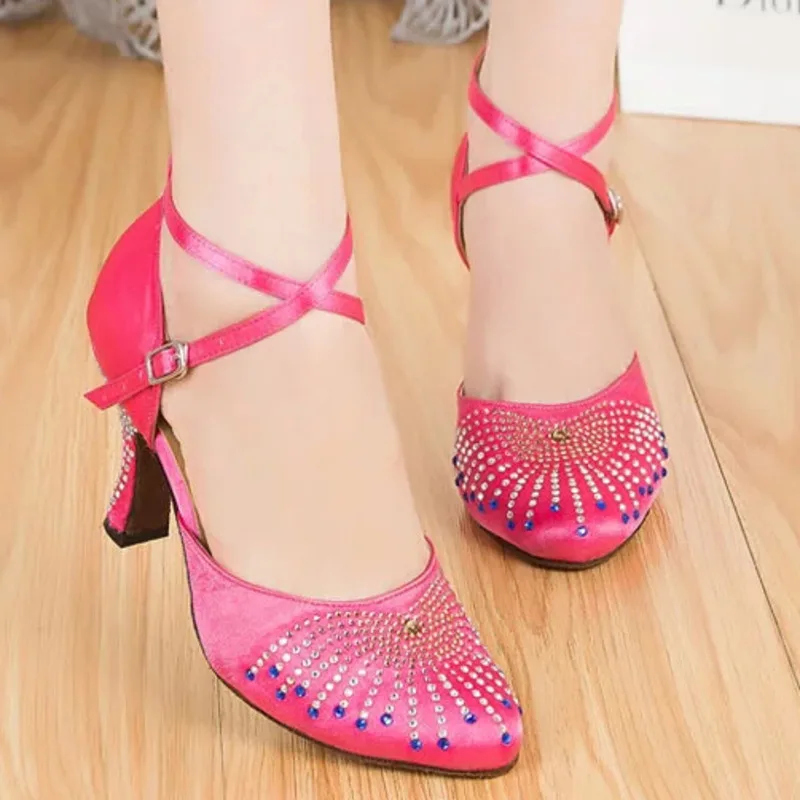
- In an open-toe style, we want our toes to reach the end or come a bit over the front edge of the shoe.
This is important for Latin style dances, where technique involves pointing the feet. We do not want the lip of the shoe to be too long, which may catch the floor or impede in proper foot actions.
- Heels sit in the heel cup without gapping or excess room. Front of shoe (width) hugs as much of the foot as possible without gapping or excess room.
What is a poor fit:
- Extra toe room may result in a “sloppy” fit and can get in the way of completing our foot actions.
- Extra heel space means the heel cup does not hold our foot into the shoe and may result in instability or slippage, or unwanted rubbing, which can cause blistering.
A roomy, unstable fit can cause injury! Shoes that are too wide and roomy don’t hold our feet well enough. This causes us to overwork our feet against the shoe due to a lack of support.
This causes us to overwork our feet against the shoe due to a lack of support.
**Note: Please use your best judgement based on these guidelines to find your best fit. We DO NOT recommend or encourage a fit that hurts or causes extreme discomfort. Please be aware that dance shoes will feel different from what we are used to in street shoes and will often take a period of adjustment, but they should not hurt you.
So what style should I look for?
The appearance of the dance shoe is less about fashion and more about the type of dance. Here is a very general guideline to the differences in dance shoe styles:
Open-toe VS Closed-toe
- Closed-toe styles:
- Offers more support and is more structured than open-toe styles
- More support makes them ideal for proper technique in American Smooth and International Standard style dances
- Open-toe styles:
- Offers more flexibility and range of motion than closed-toe styles
- More flexibility makes them ideal for proper technique in American Rhythm and International Standard style dances
- Salsa, Bachata, Merengue, and various Swing style dances often fall under a similar family of dances; if more flexibility is desired, open-toe is recommended
Solid front VS Strappy front
- Solid front styles:
- More material covering our feet provides more support and protection
- Extra support often means slightly less flexibility
- Strappy front styles:
- Less material covering our feet makes the shoes faster to break in
- Strappier styles offer more flexibility and range of movement and articulation
Low heel VS high heel
- Low-heel styles:
- Offers more stability and is easier to balance in
- Great for practicing in or if you have injuries or weaker muscles and joints
- Lower heels will shift more balance away from the balls of feet
– We generally want to be more on the balls of our feet when partner dancing to avoid being too “back-weighted”
– But lower heels will relieve some pressure from the balls of the feet if dancers are struggling
- High-heel styles:
- Higher heels put our balance more towards the ball of the foot which is ideal for Latin and Rhythm style dances (or other similar styles)
- Higher heels also aid in proper posture for correct “Cuban motion” technique
Split-sole VS Full-sole
- Split-soles:
- Has a shorter shank to allow for more flexibility in the shoe
- Easier to point our feet for proper Latin/Rhythm style dance technique
- Full-soles:
- Has a longer shank, which gives shoes more structure and support
- Less flexibility, but will help better-maintain balance and stability
Differences between the buckle types?
There are a variety of different types of buckles and closures used across many different dance shoe styles.
 Which kinds are used typically depends on the choice of the shoe brand. For example, all of the Supadance brand shoes will feature quick-release style buckles, while others like Ray Rose will use traditional style buckles. Since the methods of adjustment and fixing and undoing each type of closure is different, it may be worth noting what kinds your dance shoes will use. However, no matter which kind, they all serve the same purpose of keeping the shoe straps secured around the foot while dancing.
Which kinds are used typically depends on the choice of the shoe brand. For example, all of the Supadance brand shoes will feature quick-release style buckles, while others like Ray Rose will use traditional style buckles. Since the methods of adjustment and fixing and undoing each type of closure is different, it may be worth noting what kinds your dance shoes will use. However, no matter which kind, they all serve the same purpose of keeping the shoe straps secured around the foot while dancing. - Traditional buckle:
- Simple and classic buckle style; these are familiar to everyone, but often takes a bit more time to do and undo
- Quick-release buckle:
- Allows for quicker clasping and unclasping for faster changes in and out of shoes
- May take a bit of time to get used to for those unfamiliar, but just keep practicing!
- Tips: after you find your correct hole setting, there is no need to ever undo the buckle from the strap again unless an adjustment needs to be made.
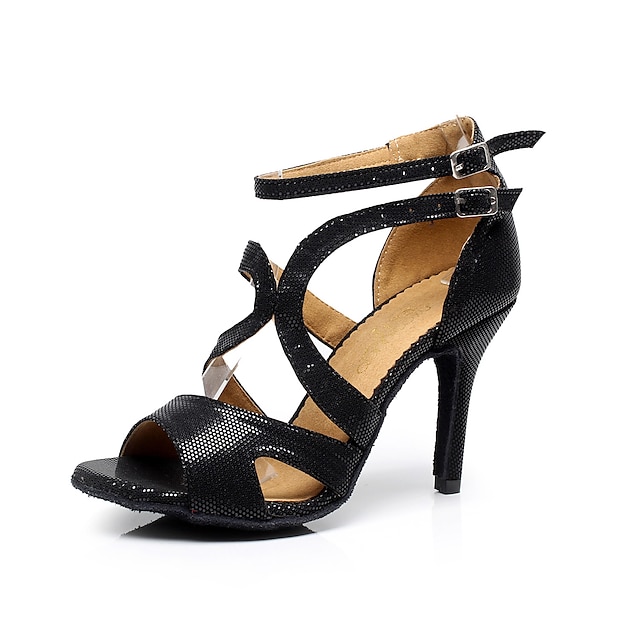 It’s advised to keep the buckle on the strap, since it’s easy to lose if left undone or removed.
It’s advised to keep the buckle on the strap, since it’s easy to lose if left undone or removed.
- Snap button buckles:
- A variation of the quick-release for easy on and off
- Allows for full customized adjustments without a need for hole settings to be punched in
- Tips: Adjusting the buckle to the right spot on the strap might be tricky at first! It might be easier to undo the entire strap from the buckle, slide it to the right spot, then slide the strap back through.
- Like the quick-release buckle, there is no need to ever undo the buckle from the strap again unless an adjustment needs to be made.
Differences between the strap styles?
There are many different straps used in dance shoe styles. Some of the most common types are the arch strap, the T-strap, or a basic ankle strap. Generally, the way the strap looks is completely an aesthetic choice, and all of them will do the job of securing the shoes to our feet while dancing.
 The arch strap is perhaps among the most common types of shoe straps for dance shoes and is known to provide extra security, since it wraps underneath the arch and back over the top of the foot. Many new dancers may not be accustomed to the look of the arch strap, but it is widely used in many different dance shoe styles for its added support and security.
The arch strap is perhaps among the most common types of shoe straps for dance shoes and is known to provide extra security, since it wraps underneath the arch and back over the top of the foot. Many new dancers may not be accustomed to the look of the arch strap, but it is widely used in many different dance shoe styles for its added support and security.- Arch strap:
- Wraps under the arch, then back over the top forming an X (often also referred to as X-strap)
- Offers added security with how it wraps around the entire foot
- Very versatile, since dancers are free to wrap the strap in any way–under the foot or even around the ankle
- Can also be cut to a shorter length to make a simple ankle strap
- T-strap:
- A classic look that offers a bit more of a “vintage” aesthetic
- Offers added security to a simple ankle strap
- Some dancers may prefer this over the arch strap if they don’t like the feeling of being “wrapped into the shoe” quite as much
- Ankle strap:
- The most basic form of shoe strap that is simpler and easier to adjust
- While a classic aesthetic look, some dancers prefer having the added security in other strap styles
Practice shoes or no?
- Practice shoes are lower-heeled alternatives for dancers to train and teach in.
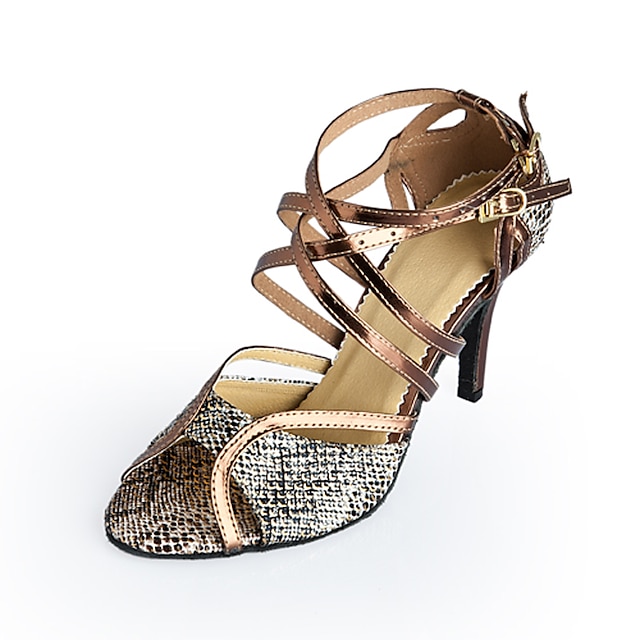 They are typically lace-up styles with a wider shaped heel, offering more comfort for longer durations of dancing.
They are typically lace-up styles with a wider shaped heel, offering more comfort for longer durations of dancing. - Not everyone prefers to use practice shoes, but they allow us to execute certain dance actions and techniques more easily.
- They’re a great way to preserve our feet and our nicer performance or competition shoes! We recommend regularly switching in and out of your practice shoes to make adjustments easier back and forth.
We recommend highly that all dancers note the pros and cons of the different dance shoe styles. Dance shoes are not fashion wear, but are equipment. Please consider what types of dance styles you are practicing and what your needs are when choosing the right type of ballroom shoe.
Please feel free to contact us if you have any questions regarding how to fit and choose a ballroom shoe! Our staff are all experienced ballroom dancers who want our customers to find the right dance shoes. Our goal is to help equip all dancers with the best tools possible in order to learn and enjoy ballroom dance.
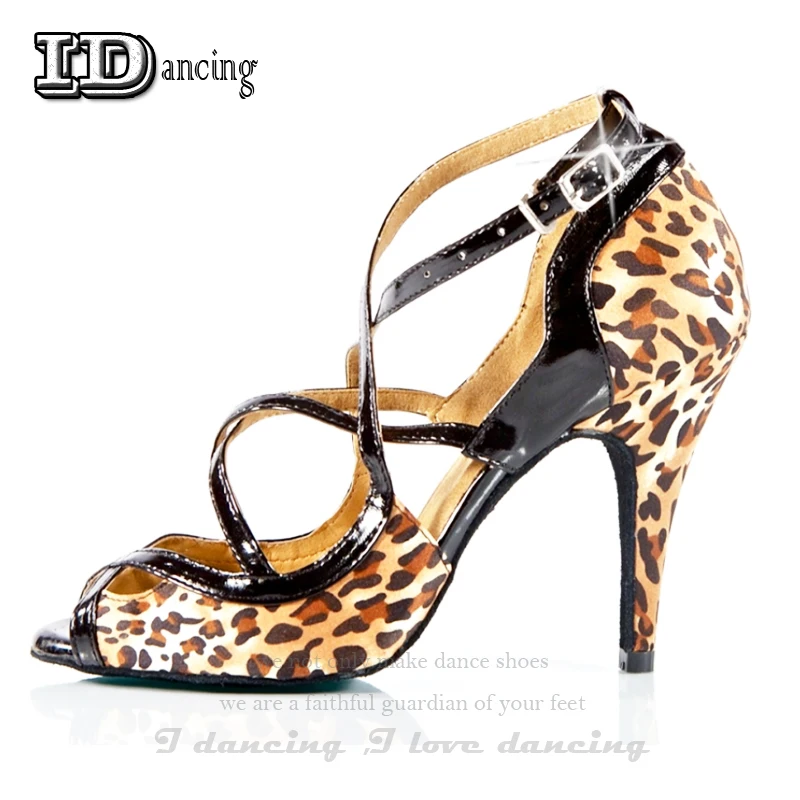
Tips and Tricks for Ballroom Dance Shoes | Fred Astaire Dance Studios
· by fredastairemequon · Bookmark the permalink. ·
Ballroom dance shoes are strange and marvelous things. They are marvelous because they are light, put your balance in the perfect place, stretch and bend with your every move, grip and slide when needed. But they are strange because in that you have to care for them differently, break them in, follow ballroom dos and don’ts and have to lace them differently. To help save you time, research, and uncomfortable life experiences we have compiled a list of some of the top tips and tricks we have learned over the years.
A big thank you to Christianne Camera, Cindy Dallman, Joyce Gitter, Kathleen Stokes, Mr. Skyler, Mr. James, and Ms. Elke for these wonderful tips! Enjoy!
One shoe definitely does NOT fit all.
- Buy your first pair of dance shoes in person (studio or dance competition like Wisconsin State).
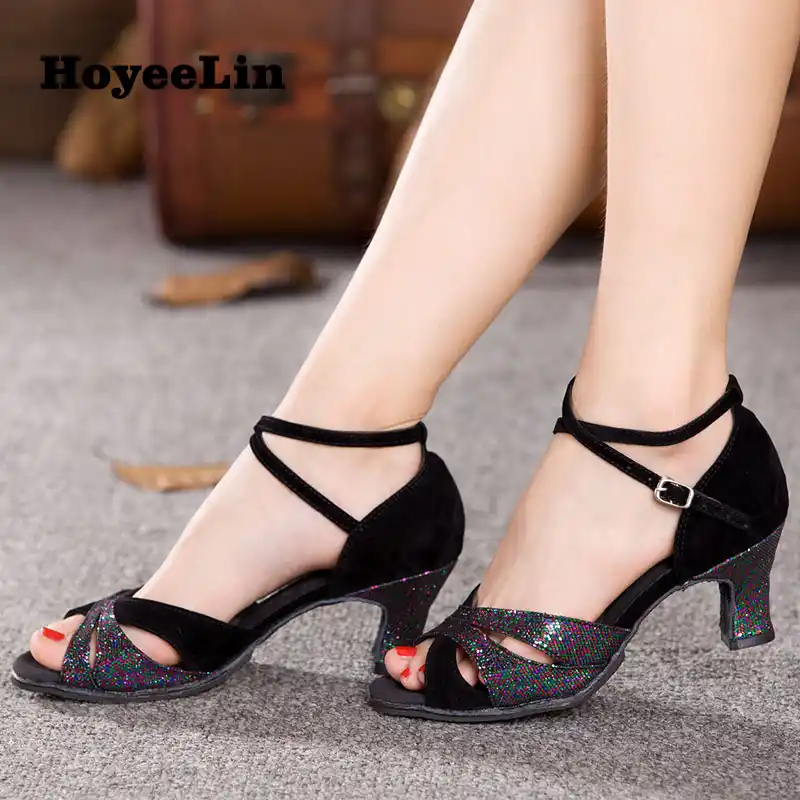 Ask to see a catalog at the studio. They can order them for you. You are not obligated to purchase if they do not fit.
Ask to see a catalog at the studio. They can order them for you. You are not obligated to purchase if they do not fit. - Most times once you know your shoe size in a brand, other styles run similar in sizing. The better shoes are made in Europe. You will need to know your size using the UK or European System.
- Women: 1st pair of shoes should be nude because it goes with everything. Then you can add to your shoe collection. “You can wear nude with black, but you can’t wear black with peach.”
- Your shoe should feel firm but not like you are going to get a blister. You want to think oh my gosh that is firm not oh my gosh BLISTER!
- If your feet swell or you do a lot of dancing get the shoes with an expandable front.
- Sometimes a 2″ heel for smooth is more comfortable than the 2 1/2 inch heel because it puts less pressure on your toes. “They already are being squeezed so this gives them a bit of a break.”
- If you have a hard time bending to buckle your dance shoes, get the shoes that have a piece that just slides in to secure.

- If you wear a size 7 or smaller and you want a low heel, you can purchase children’s shoes of the better brands at a significant saving. They are similar in quality.
- Wear the shoes with the heel height that is comfortable for you. Sometimes a 2″ heel makes a big difference in balance and pressure on the ball of the foot.
- “My favorite brand is Supadance” -Christianne Camera
- There are a variety of aids to make shoes fit better a few of them are heel grip liners and metatarsal pads (which push the foot back towards the heel of the shoe).
How do I break these things in?
- If shoes are too tight you can stretch them a little by using a traditional shoe stretcher or any type of cylinder (like a vitamin bottle) that fits snugly in the shoe. Carefully wet the under part of the straps (don’t get water on top or you will have water spots). Place stretcher or cylinder inside the shoe and let it dry over night. You may have to do this twice.

- Put on a light sock the first couple of times to allow it to stretch without the ouch!
- With the shoe off bend the front part of the shoe almost in a rolling action up and down. This makes the front part of your shoe more flexible so when you point it is easier.
- For gentlemen’s shoes to stretch them. Sit down with the shoes on and using your hands bend (arch) you foot and then flex your foot and toes. Continue doing this for a while. This would be a great thing to do while watching your favorite program on TV.
How do I extend the life of my shoe?
- If you plan to dance for a while, get a good pair of shoes such as Supadance, International, or Ray Rose. They are expensive but will last longer and will provide solid support for your feet.
- There are a few aids to make shoes last longer: Clear heel tips, replacement heels (easily replaced), and a suede brush.
- If you brush your shoes away from the heel the nap stand us longer.
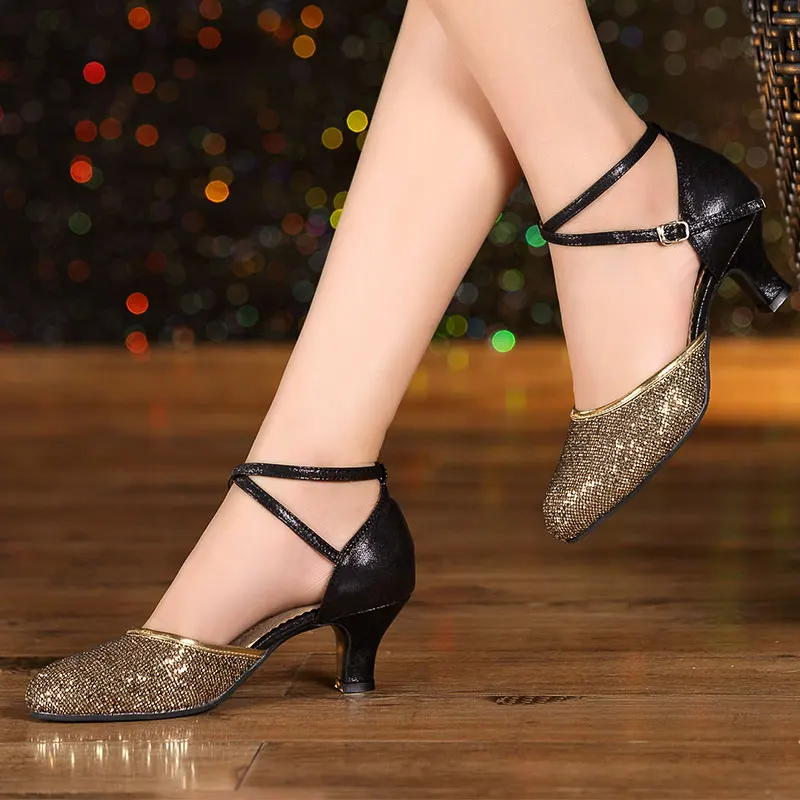
- “Ballroom shoes are like gremlins you can’t get them wet or feed them after midnight” – Ms. Elke
- Outside of obvious breakage (ie the nail is scratching the floor) these are the times when you should replace your shoes…. when the suaded leather does not come back to a suaded finish when brushing, when the padding inside of them is so flattened that you can see the circles of the nail heads in the heels, when your shoe is stretched so much that you are now slipping, and when you can smell your shoes when you are standing up (haha).
OUCH!!!! How to avoid or fix those pesky blisters!
- If you develop soft corns (between toes) or calluses, see a podiatrist. They can easily take care of them with little discomfort (personal experience).
- Change your shoes if you get a blister because you have to remove the offending agent.
- If you are at a competition and do not have an extra pair of shoes but have a blister here is a great fix: 2 blister packs (just enough padding) then tega-derm over to hold them in place.
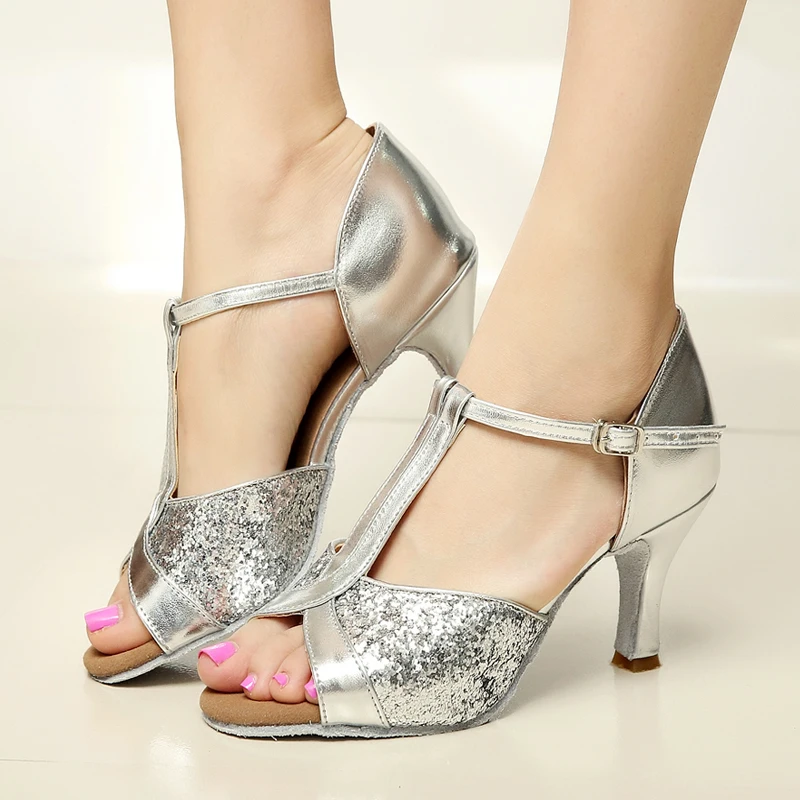
The Dos and Don’ts of ballroom shoes …. learn from our mistakes.
- Never go to a competition without a spare pair of shoes in the ballroom because you never know … and bring glue.
- Make sure you practice in your competition shoes especially if they are a different brand or have a different heel height because balance points are different in different shoes.
- If you wear the pumps (smooth shoes) make sure you have the clear elastics to hold them on. “Doing a Vienesse Waltz when one shoe has fallen off is not fun” – Kim Schneider
- Break in your shoes before a competition, just not to the point of destroying the shoe other wise you will sacrifice your point and get blisters.
- When the fabric wears off on the inside of shoes and you get a big ugly white spot, please do not perform or compete in them…. if you do not have an option you can paint it with fabric paint from Micheals or spray it with sexy spray (tanner) sold at the studio.
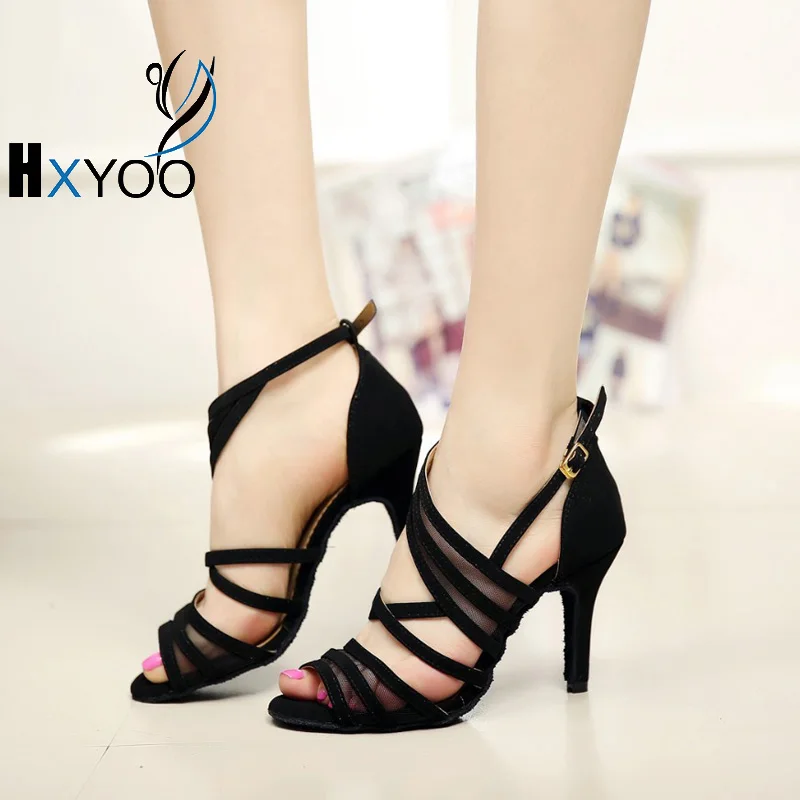
Gentlemen’s Shoes
- If you have an issue with you shoe laces coming undone try this: Start to tie your shoes like normal… 1 loop then do a double circle around and then pull through.
- You should wear patent leather shoes for smooth. They stick together so you can put Vaseline on the inside of the shoe where they brush past. The new way to do this is to use the shoe shine sponge because it was silicone on it.
- Shine your patent leather shoes with banana peels.
- If you are a man make sure you bring an extra pair of shoe laces, because if it can happen it will.
- “International lacing! Tightest way to tie your shoes.” – NY Times
- BUT HOW?????
DON”T TIE YOUR SHOE LIKE THIS
Step 1 : Thread the 1st set of holes leaving the right side longer.
Step 2 : Continue looping the original right side under and over.
Step 3 : Finish and then remove the tan shoe lace and replace with a black one. 🙂
🙂
Hope that helps!
Like this:
Like Loading...
Tags: Astaire, Ballroom, Blister, Breaking, cedarburg, Dance, Don'ts, Dos, Fred, glendale, grafton, In, International, Lacing, Mequon, replace, Shoes, shorewood, studio, thiensville, Tips, Tricks, when, white fish bay Search- Discuss
- Get Inspired
- Get Polling
- Get Support
- Learn WordPress.com
- Theme Showcase
- WordPress Planet
- WordPress.com News
- Register
- Log in
Heel, lacing, fastening - three pieces of shoes for ballroom dancing - Dance Magic
- Details
- Posted on 21.03.2013 14:45
Ballroom dance shoes have their own characteristics, which must be considered before buying a professional dance pair. And to be absolutely precise, it is necessary to take into account three features at once, each of which will not only make it possible to easily and naturally overcome the difficulties of the dance program, but will also allow you and your partner to completely surrender to the dance.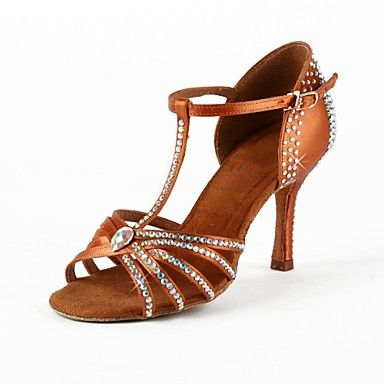 nine0009 Do you want to dance professionally? Get started in a dance shoe store!
nine0009 Do you want to dance professionally? Get started in a dance shoe store!
In order to become a professional, you need to pay attention not only to technology. In addition to your own skill and the feeling of a partner, you need to pay attention to ballroom dancing shoes, their appearance, as well as the heel, lacing, and clasp. These are the very three whales that practically guarantee safe and comfortable contact of the dancer's foot with the parquet, and also help athletes hone their movements. nine0011
Heel
This is a special detail that makes ballroom shoes not only elegant but also stable. This element elongates the foot, giving it a more graceful contour, but the main purpose of the heel is to make ballroom shoes more dynamic, that is, to place the heel above the level of the toe.
Today you can order dance shoes with different heel modifications. Currently, this part is made of several materials, while the heel is allowed both under the heel and under the foot (the support will still be under the heel area).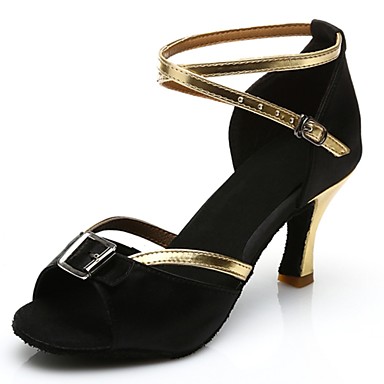 nine0011
nine0011
As a rule, any professional online dance shoe store offers pairs with several types of heels.
Flare heel (or flare): this heel is very stable, as it expands downwards (suddenly or smoothly) and has the largest contact area with the parquet.
Slim heel (or straight heel): many more professional dancers find this shape to be the most elegant, while still allowing a stable hold on the floor.
Contour heel: a heel with a straight silhouette, slightly tapering in the center with a slight flare at the ground. nine0011
Dance shoe stores now offer professional shoes with narrow heels (metal, transparent or translucent) as an alternative to Slim heels.
For a European program, such shoes will look a little extravagant, but for Latina, shoes with catchy heels perfectly complement the image of a couple.
The optimal heel height for women's shoes in the European program is between 5 and 9 cm (2-3.5 inches). It is acceptable for men to dance in shoes with a heel height of just over 2 cm (about 1 inch). For the Latin program, the heels of women's shoes, as a rule, do not exceed 4–4.5 cm.
For the Latin program, the heels of women's shoes, as a rule, do not exceed 4–4.5 cm.
The pair for Latina has some peculiarities - the heel fulcrum is located at the middle of the heel, and the heel itself is visually brought under the foot, while the axis of the heel runs strictly in the center of the heel. In addition, its contact surface has a smaller area of contact with the parquet than the heel for the European program.
Men's ballroom dancing shoes may have a special shock absorber on the heel, which prevents the foot from slipping on the floor. In addition, Latin shoes are often equipped with a puff heel, which protects the joints of the legs, softening the load during the dance. nine0011
Lace-up
Ballroom dance shoe lacing is designed not only to add an aesthetic component to the appearance of the shoes, but to fix ballroom shoes on the foot. As a rule, men's shoes have five pairs of holes for which athletes use parallel lacing.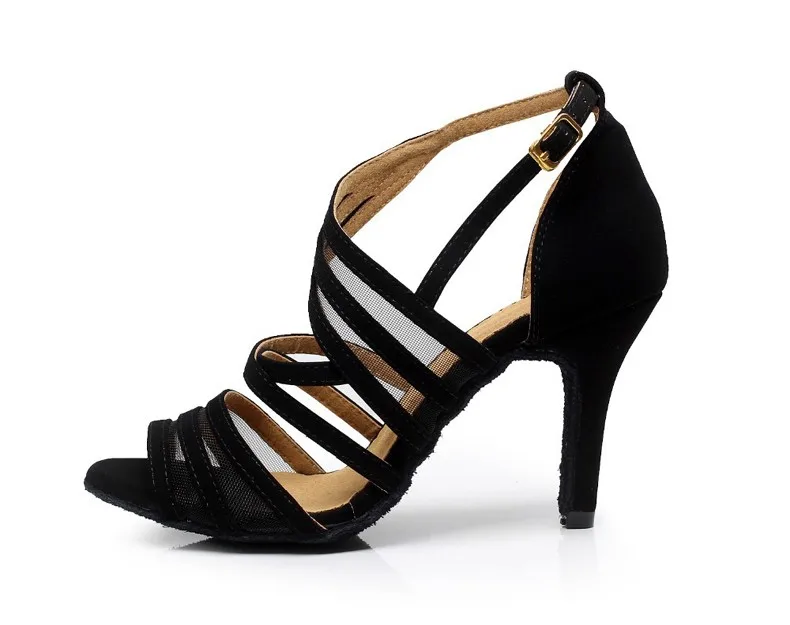 There are models with three pairs of holes, as well as shoes in which lacing is not provided at all. You need to understand that such shoes are not fixed too tightly on the leg, and therefore there is a risk of injury. nine0011
There are models with three pairs of holes, as well as shoes in which lacing is not provided at all. You need to understand that such shoes are not fixed too tightly on the leg, and therefore there is a risk of injury. nine0011
Clasp
The clasps are various metal buckles located on the outside of the foot. The modern clasps feature a hook hidden under the traditional element that allows you to easily attach the strap to your foot by adjusting the fit of the shoe just once.
According to professional dancers, difficult elements of dance technique are easier to overcome if sufficient attention is paid to ballroom dancing clothes and shoes.
Ballroom dance shoes for girls
All children love to dance - that's a fact. But it's one thing - amateur dancing, at a school disco or a home celebration: no special training and equipment is required. Professional occupations are another matter: an ordinary wardrobe will not work here. And it is especially important what the child is wearing, because properly selected ballroom dancing shoes for a girl are not only convenience in training, but also success in mastering the specifics of dance techniques.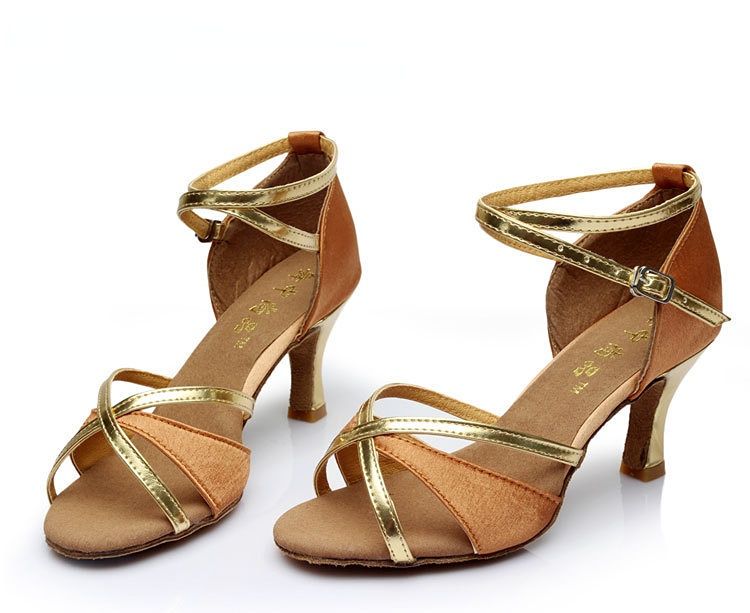 Therefore, it is necessary to approach the issue of purchasing dance shoes with responsibility: perhaps a little princess will step into the world of big dance in these shoes! nine0011
Therefore, it is necessary to approach the issue of purchasing dance shoes with responsibility: perhaps a little princess will step into the world of big dance in these shoes! nine0011
The content dancing shoes? Shape, material, heel height, comfort
Types of shoes for ballroom dancing
17 types of dance are classified as sports ballroom dancing. And in the dance world they are divided into 2 programs: European (it includes waltzes, foxtrots and tango) and Latin American (it includes rumba, samba, cha-cha-cha, jive and paso doble). In addition, theoretically, rock and roll, mazurka, salsa, square dance, twist and others are also classified as ballroom. Can you imagine how different the techniques of these dances are? Here, as in life: we will not run cross-country in flip-flops and we will not sit on a bicycle in Louboutins.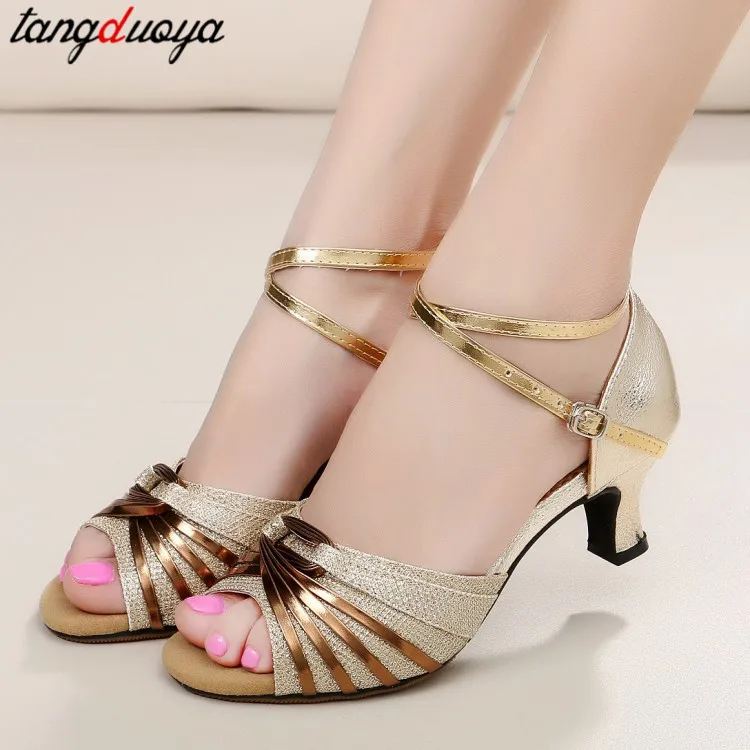 So what kind of children's ballroom dance shoes are there? nine0011
So what kind of children's ballroom dance shoes are there? nine0011
For girls
Of course, you can take Czech shoes for the first dance lessons, but after a while the coach will definitely ask you to replace them with special shoes. The fact is that the Czechs have a solid sole, which can interfere with the proper functioning of the foot. These shoes do not fit tightly on the foot, as they are fastened only with an elastic band at the instep, they can fly off and cause injuries.
There are also ballet flats - they are ideal for warm-ups and for performances by beginner dancers, they are well fixed on the leg, and the special split sole (reinforced heel and hard arch) contributes to the correct work of the foot. There is a big minus - ballet shoes are short-lived, but the relatively low cost allows you to change shoes every 2-3 months without much damage to the family budget. nine0011
Both ballerinas and shoes can be either fabric or leather. Naturally, you will have to pay more for leather shoes, but they are also more durable.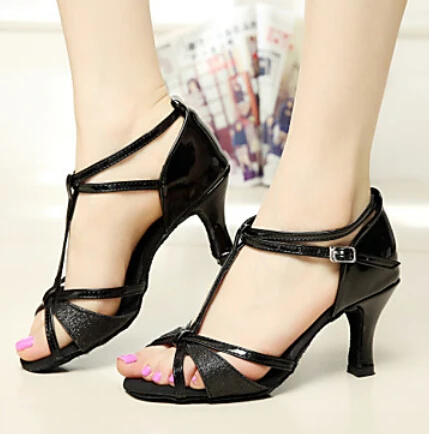
Another option for comfortable dancing shoes is jazz shoes. They have a split sole, but, unlike ballet flats, the arch and heel are denser, and there is a small heel on the heel. Jazz shoes are made of leather, there is lacing on the vault. Jazz shoes have a plus - this is durability, and a minus - it is hard to breathe in the skin of the leg.
Special attention should be paid when buying training ball shoes, they must not slip!
As a rule, the floor in the dance hall is covered with parquet, so plastic and rubber soles are excluded immediately.
The ideal sole material is natural suede.
For boys
For training boys, you can buy Czech shoes for the first time, or you can buy ballet flats. There should be no prejudice that ballet flats are shoes for girls. Choose ballet shoes without decorations, only black - the boy will be comfortable in them, and his legs will not experience unnecessary stress. As soon as the boy begins to feel more confident in the dance studio, jazz shoes can be purchased for him.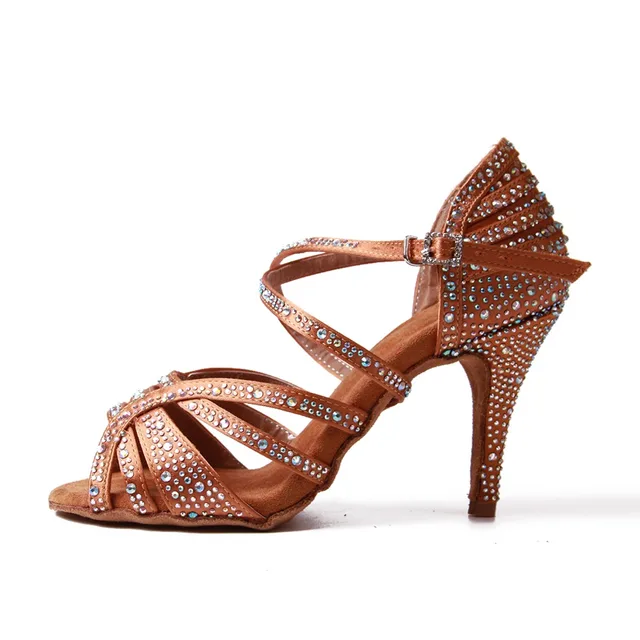 nine0011
nine0011
Children's shoes for ballroom dancing
When a child starts performing on stage, of course, shoes other than training shoes will be required. And ordinary shoes will not fit here.
Ballroom dance shoes should not be worn everyday, and casual shoes should not replace dance shoes!
Specialized stores sell ballroom shoes for both girls and boys. It is designed taking into account the anatomical features of the child's foot, has an increased ability to bend, guaranteeing the free position of the feet during dance movements - firmly fixes the foot "in position" and gently glides on the parquet. nine0011
Ballroom dancing shoes
By the way, ballroom dancing shoes are different! Ballroom shoes for a girl should be selected separately:
- for the European program;
- for the Latin American program.
The fundamental difference in these programs is in the execution technique: the step in the European program (standard) starts from the heel, and in Latin - from the toe.
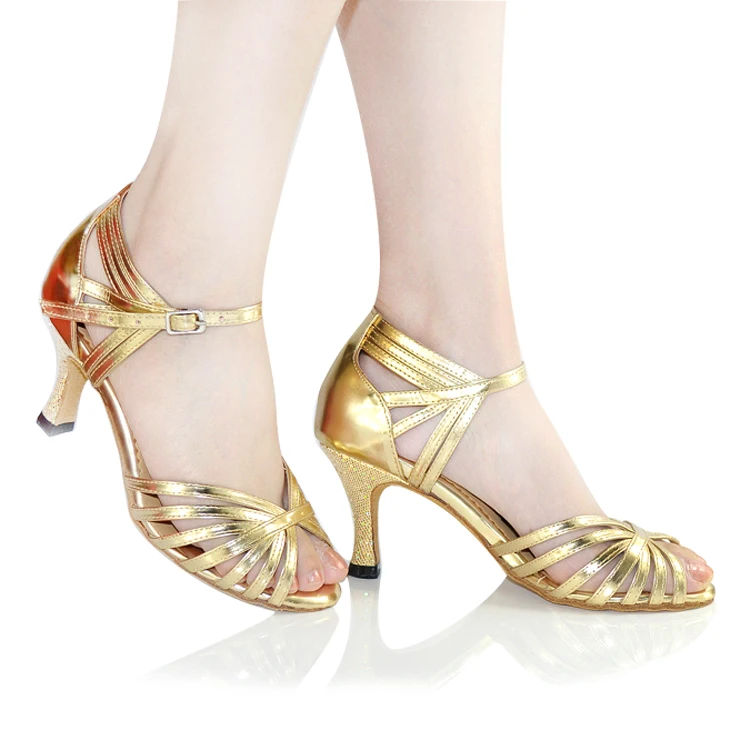
Shoes for the "standard" program must meet the requirements of the Russian Dance Sports Federation. Distinctive features of these models of shoes are an elongated arch support and a closed toe. nine0011
Shoes for the Latin American program for girls are special - they have a raised toe, and there is always a strap: it is fastened either crosswise over the foot or wraps around the ankle. The heel in Latina shoes is strictly vertical. Tango shoes stand out separately. They are more rigid in the sole. As a rule, all latina shoes have an open toe.
What should be the shoes for dancing? Shape, material, heel height, comfort
When choosing shoes for a little dancer, be sure to consider the following factors:
- shape: for the European ballroom program we choose a classic boat, latin shoes are more reminiscent of sandals;
- buckle strap: shoes for the European part of the program may not have a strap (then the inside of the shoes must be sewn with an elastic band to fix it on the leg), for Latina the strap is a prerequisite, it can be in the shape of a cross, the letter “T” or a regular single transverse ;
- material: ideally, of course, leather (or leatherette), but fabric satin is acceptable.
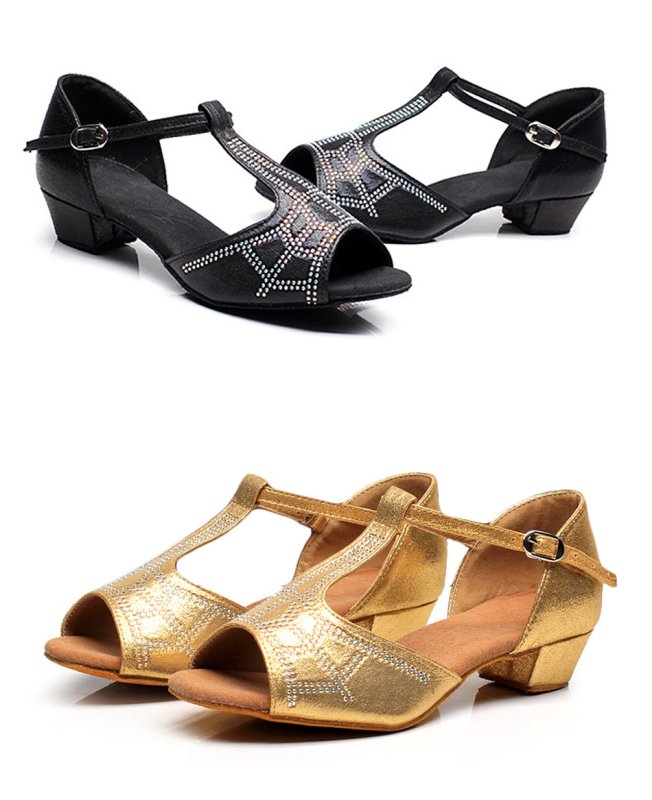 nine0066
nine0066
Watch this video on YouTube
Pay special attention to the heel. So, for girls of the category Juvenal -1 (from 8 to 10 years old) and Juvenal-2 (10-12 years old), a heel of up to 3.5 centimeters is allowed. It is comfortable and wide, for which it is called the "block". Girls from 12 years old can dance in Cuban or glass heels. From the age of 14, there are no longer restrictions on the shape and height of the heel.
Color solutions
So, if for ballroom boys there are strict color requirements for shoes - only black, then for girls there is complete freedom. Any colors are allowed. And professional trainers, on the contrary, strongly advise buying bright shoes for performances - this way they will be able to control possible errors in the placement of their pupil's foot from the auditorium. nine0011
How to choose the right ballroom dance shoes for a girl?
Watch this video on YouTube
Before choosing ballroom shoes for a girl, consult a trainer.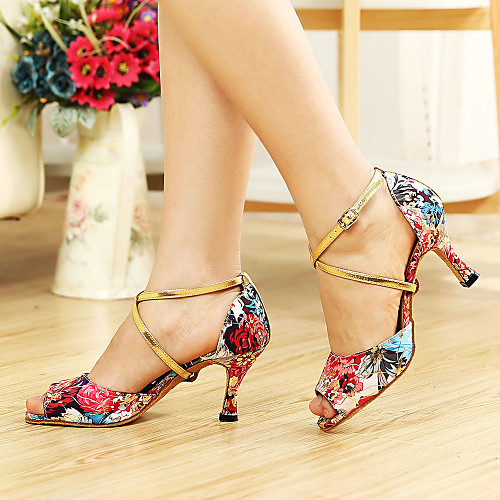 He will give practical advice - this person professionally evaluates both the anatomical features of the little dancer's legs and her physical capabilities.
He will give practical advice - this person professionally evaluates both the anatomical features of the little dancer's legs and her physical capabilities.
When buying latin shoes, pay attention to the “rise”: the entire foot should literally lie on the insole, without forming visible voids. And when choosing shoes for the European program, it is recommended to conduct a comfort test: ask the girl to put on the right size shoe and roll from heel to toe. In good shoes, the young dancer will not feel discomfort. nine0011
Regardless of the height and shape of the heel, it must be located clearly under the heel: only such an arrangement guarantees the correct distribution of weight on the leg in motion.
Be sure to consider: shoes should be in harmony with the main outfit.
How to determine the size of dance shoes?
When trying on ballroom dancing shoes, it is recommended to try on both the right and left shoes at the same time. At the same time, the shoes should be fastened, walk in them and make a couple of pas.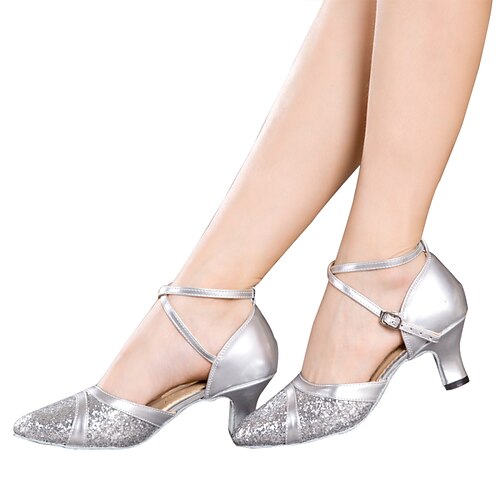 During this experiment, they should not reap and hang out. nine0011
During this experiment, they should not reap and hang out. nine0011
As with casual shoes, ballroom dance shoe sizes may vary from metric. Therefore, they should go to buy with the dancer. When ordering via the Internet, play it safe by ordering, if possible, 2-3 pairs for trying on: your size, one size larger and one size smaller. Among them, there will definitely be those that will fit.
Finding the correct foot size will take a couple of minutes:
- place the child's foot on a piece of paper spread on the floor; nine0066
- circle the foot with a pencil;
- Measure with a ruler the length of the drawn foot from the heel to the tip of the most protruding toe (large or next to it).
As a rule, most European shoe manufacturers use the sizing system. The unit of measure is the pin - it is equal to 2/3 cm. In Russia, the metric system is adopted - the size of the shoe matches the length of the foot. When buying a ballroom pair, drive away the temptation to buy "for growth" - this can cause injury to the child! The maximum allowable oversize is 0.